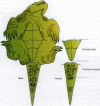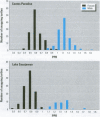Abstract
Recent research has suggested that contaminants in the environment may influence sex differentiation and reproductive endocrine function in wildlife. Concentrations of organochlorine contaminants (total polychlorinated biphenyls, pesticides) were higher in the blood plasma of snapping turtles from contaminated sites than in those from reference sites. The ratio of the precloacal length to the posterior lobe of the plastron (PPR) is sexually dimorphic in snapping turtles. There were significant reductions in the PPR at three contaminated sites versus two reference sites. The magnitude of the response was such that a significantly higher proportion of PPRs of males from a contaminated site (Cootes Paradise) overlapped with those of females than PPRs of males from a reference site (Lake Sasajewun). Observers can incorrectly identify the sex of turtles at the contaminated site based on secondary sexual characteristics alone. Unlike the changes to the morphology, there were few changes in 17 beta-estradiol or testosterone levels, and where differences occurred, there was more variation among reference sites than between the reference and contaminated sites. Our results suggest that environmental contaminants may affect sexually dimorphic morphology in snapping turtles without affecting circulating testosterone or estrogen levels in the adults.
Full text
PDF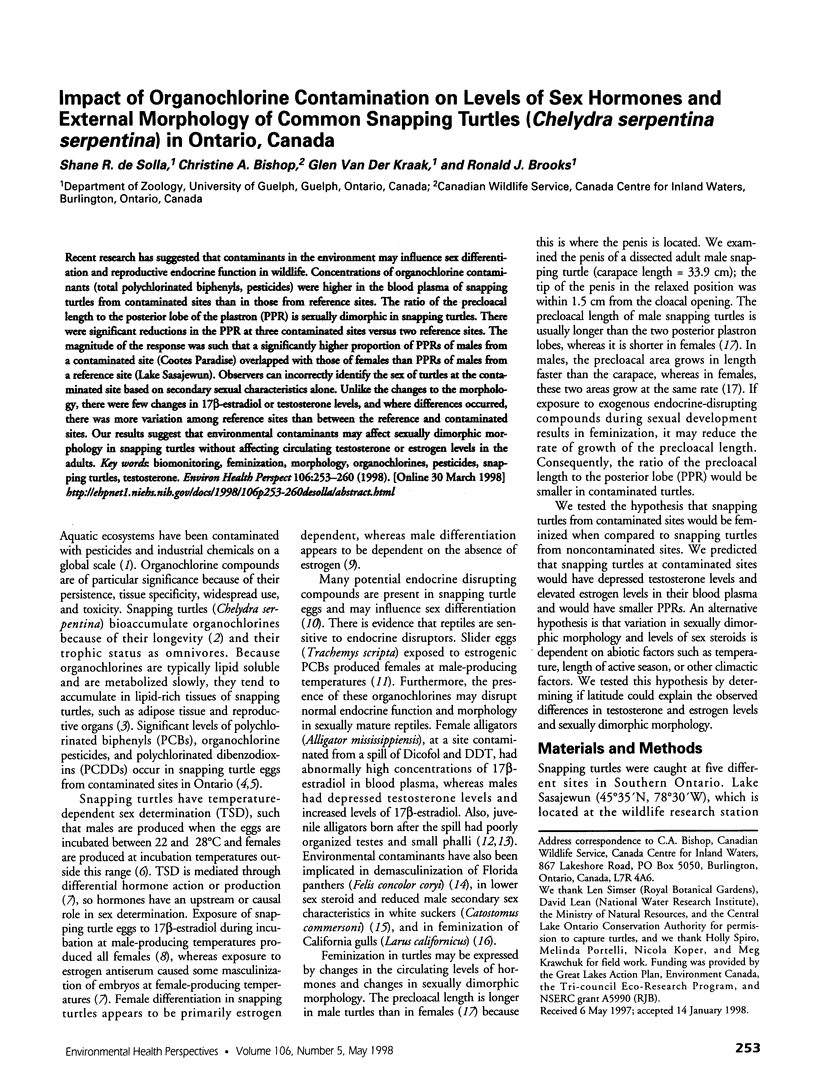
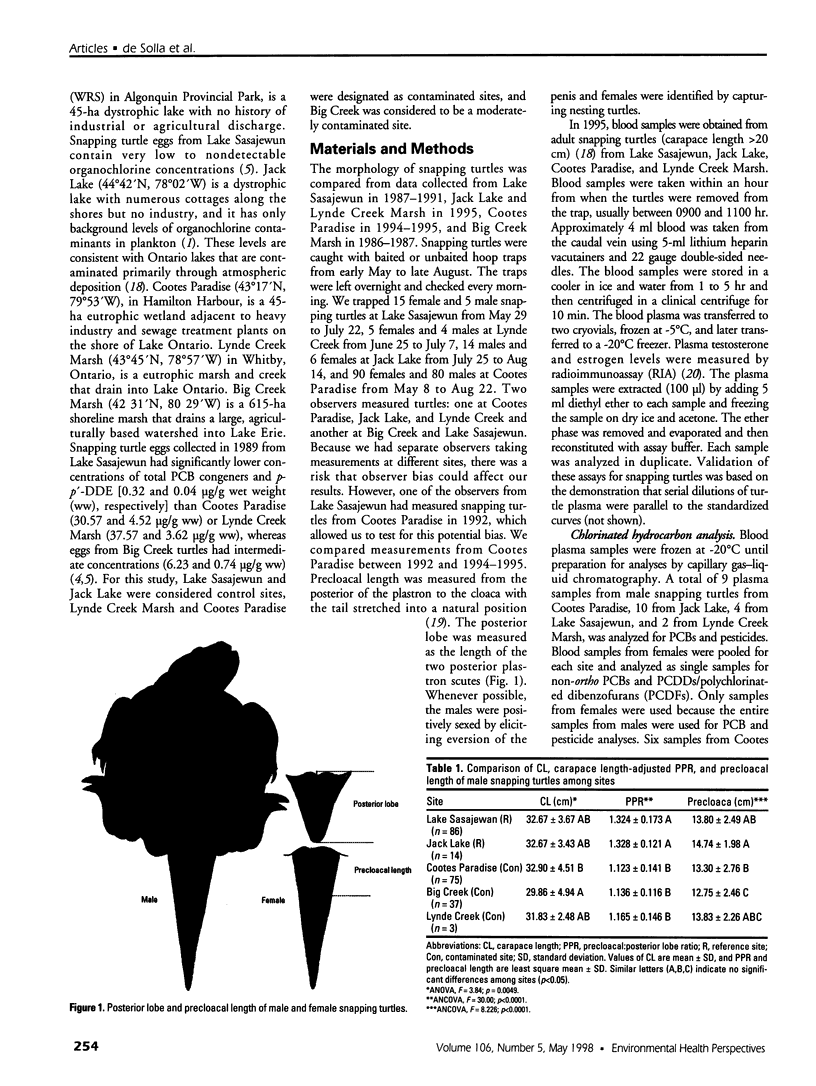
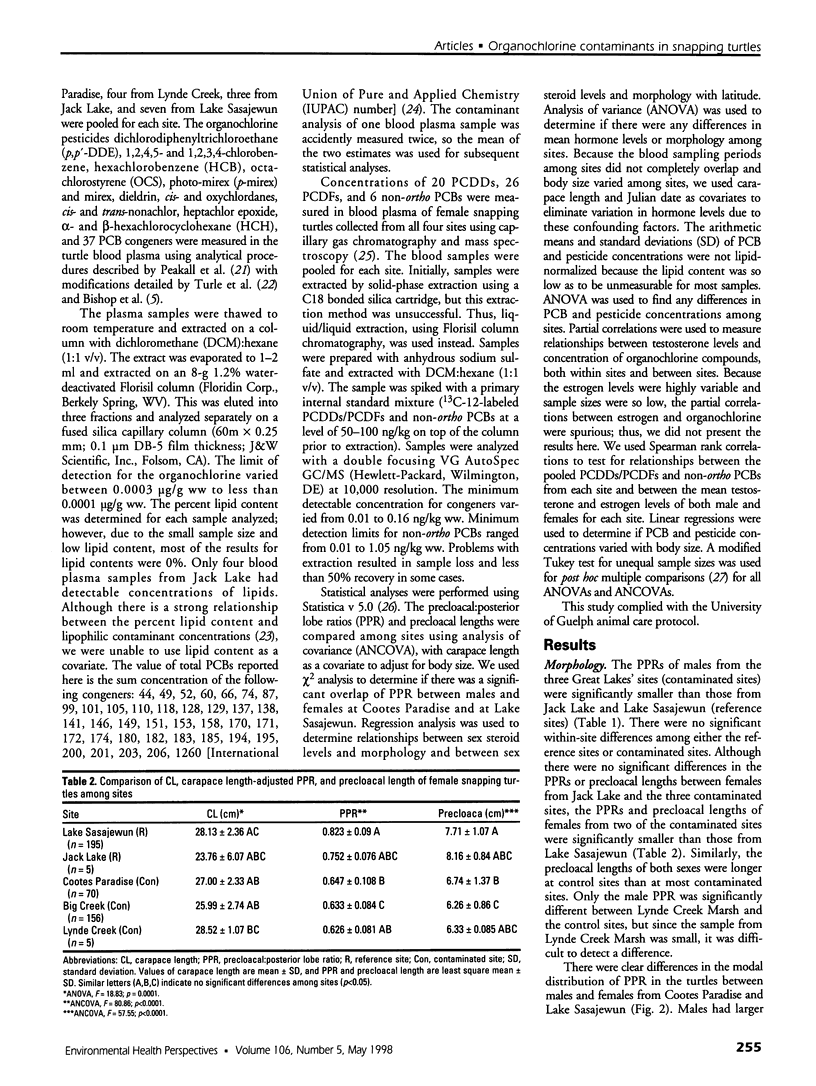
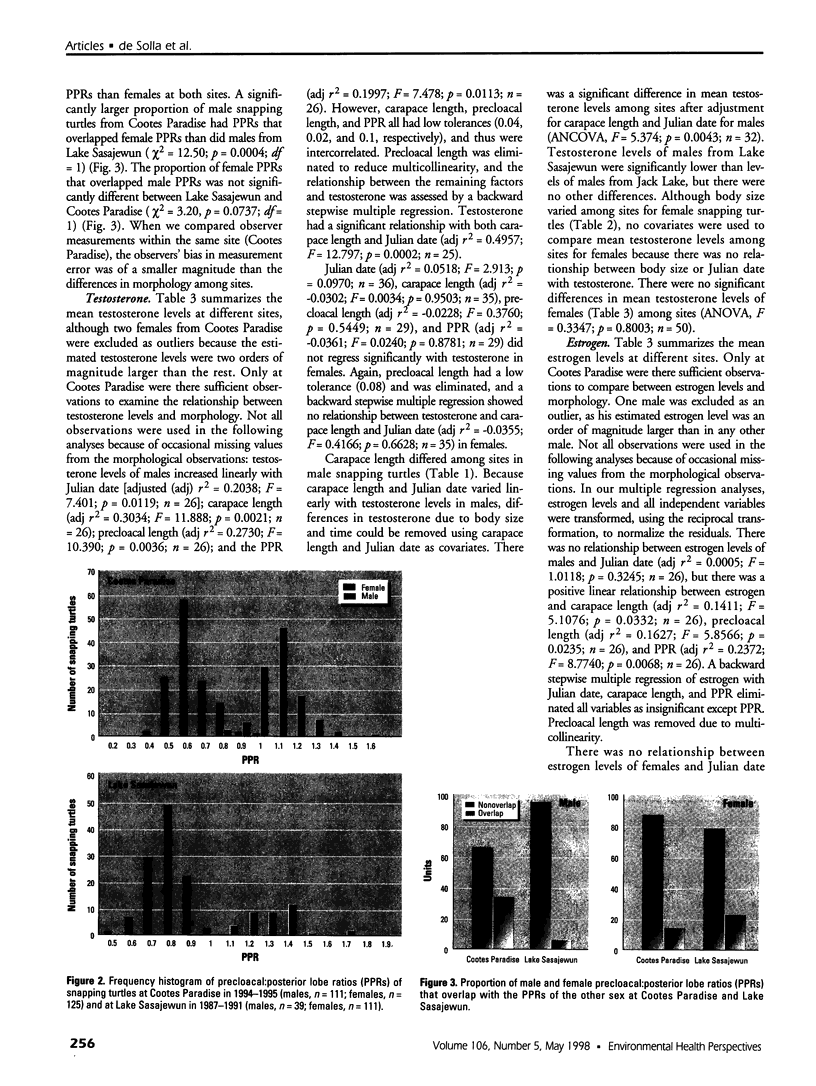
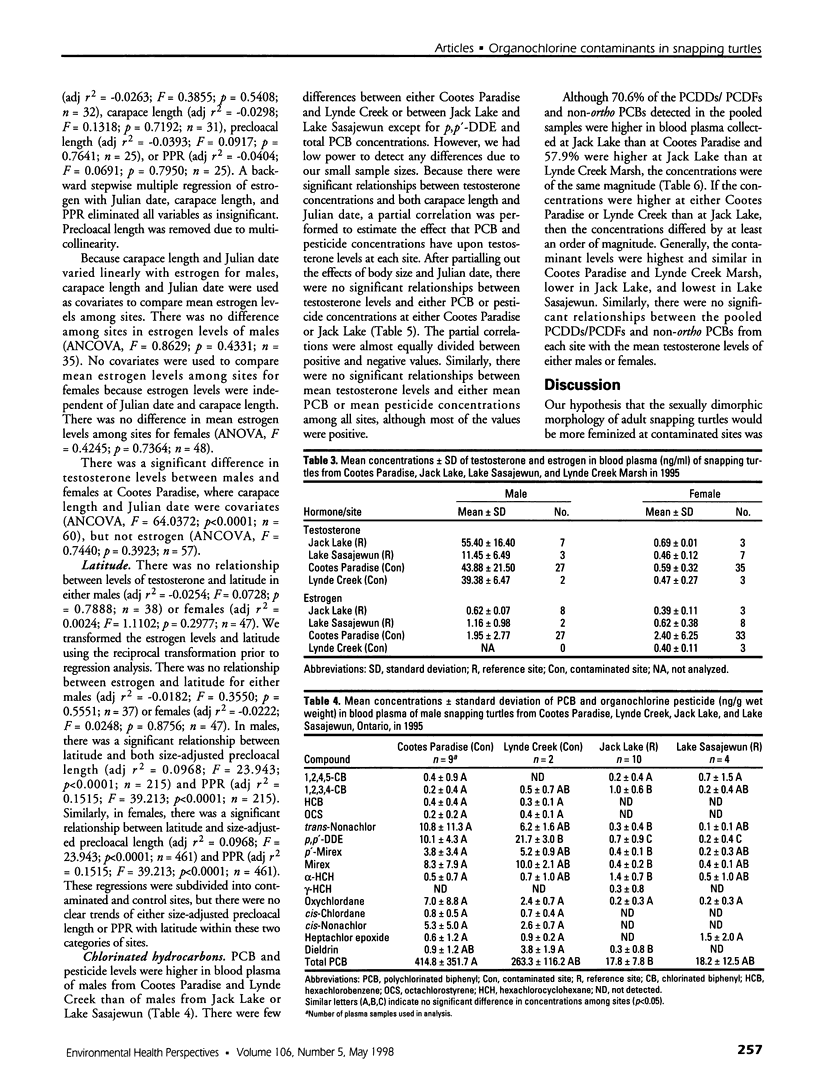
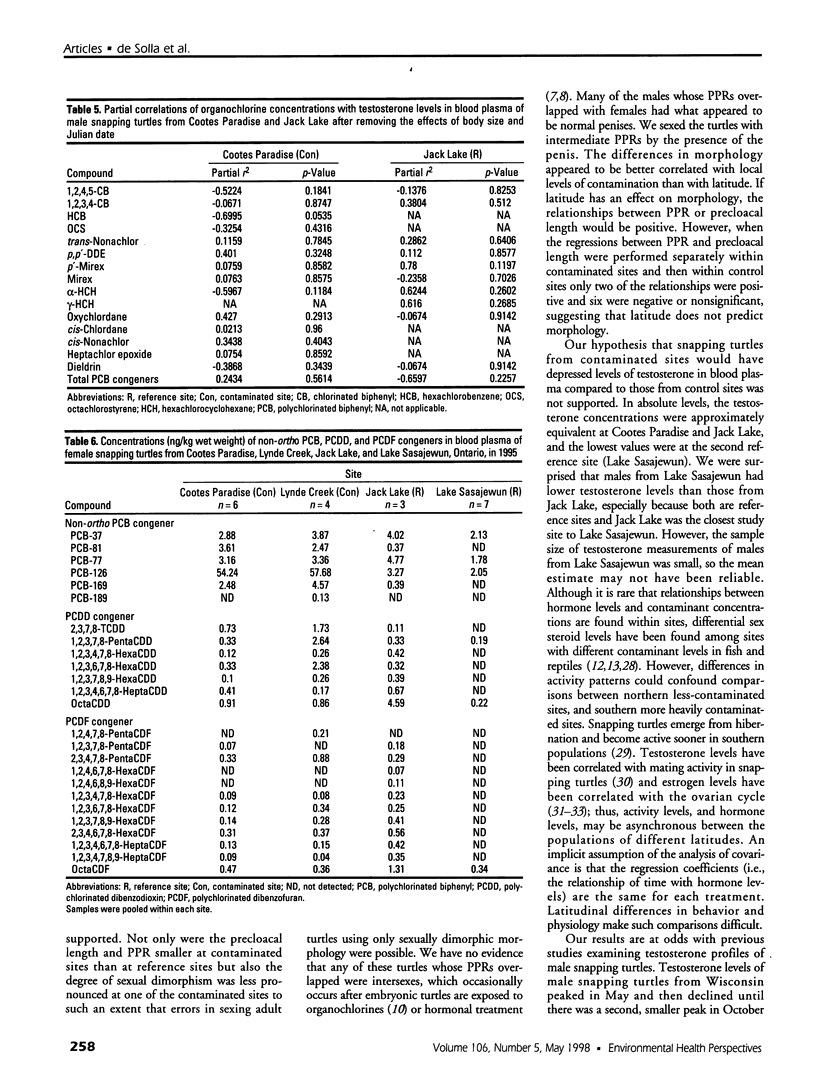
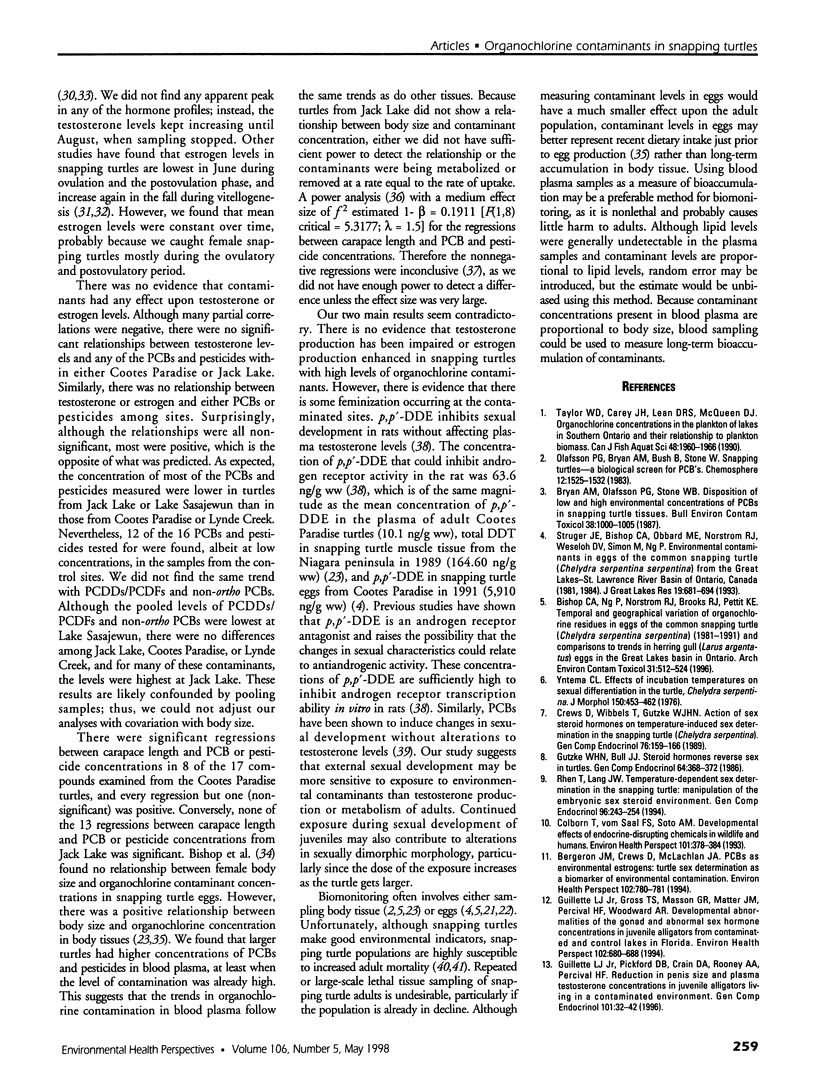
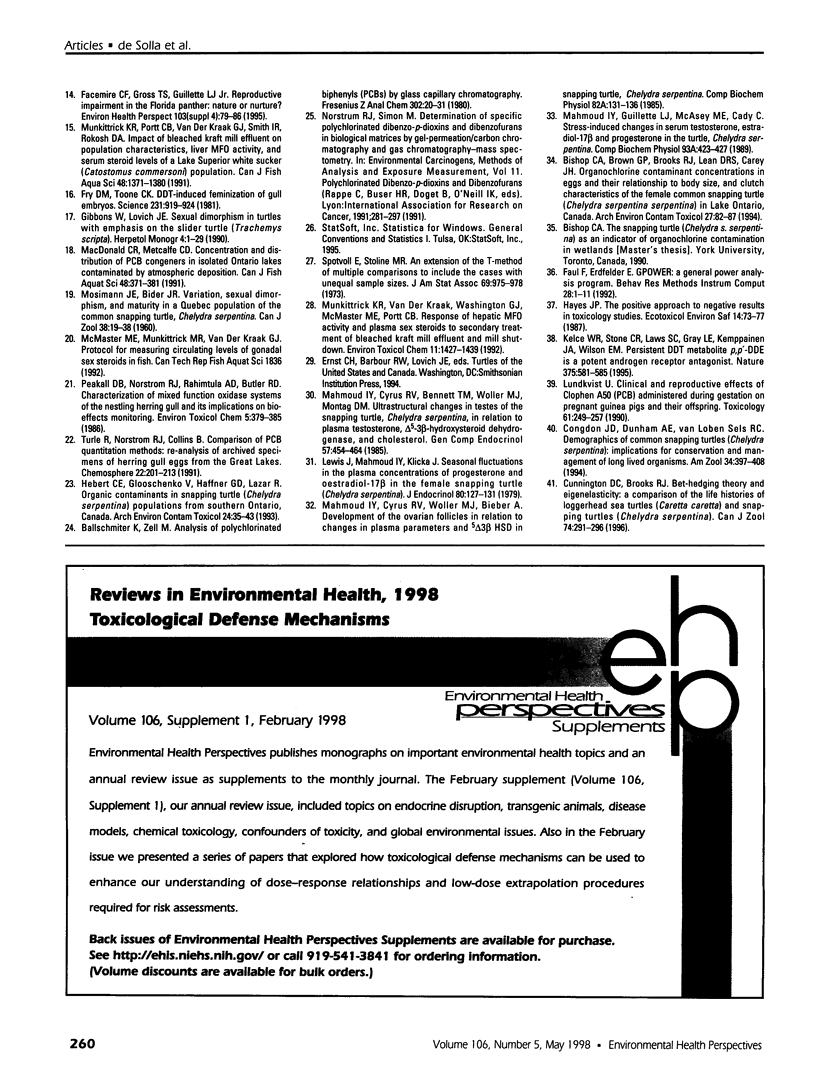
Images in this article
Selected References
These references are in PubMed. This may not be the complete list of references from this article.
- Bergeron J. M., Crews D., McLachlan J. A. PCBs as environmental estrogens: turtle sex determination as a biomarker of environmental contamination. Environ Health Perspect. 1994 Sep;102(9):780–781. doi: 10.1289/ehp.94102780. [DOI] [PMC free article] [PubMed] [Google Scholar]
- Bishop C. A., Ng P., Norstrom R. J., Brooks R. J., Pettit K. E. Temporal and geographic variation of organochlorine residues in eggs of the common snapping turtle (Chelydra serpentina serpentina) (1981-1991) and comparisons to trends in the herring gull (Larus argentatus) in the Great Lakes basin in Ontario, Canada. Arch Environ Contam Toxicol. 1996 Nov;31(4):512–524. doi: 10.1007/BF00212435. [DOI] [PubMed] [Google Scholar]
- Bryan A. M., Olafsson P. G., Stone W. B. Disposition of low and high environmental concentrations of PCBs in snapping turtle tissues. Bull Environ Contam Toxicol. 1987 Jun;38(6):1000–1005. doi: 10.1007/BF01609087. [DOI] [PubMed] [Google Scholar]
- Colborn T., vom Saal F. S., Soto A. M. Developmental effects of endocrine-disrupting chemicals in wildlife and humans. Environ Health Perspect. 1993 Oct;101(5):378–384. doi: 10.1289/ehp.93101378. [DOI] [PMC free article] [PubMed] [Google Scholar]
- Crews D., Wibbels T., Gutzke W. H. Action of sex steroid hormones on temperature-induced sex determination in the snapping turtle (Chelydra serpentina). Gen Comp Endocrinol. 1989 Oct;76(1):159–166. doi: 10.1016/0016-6480(89)90042-7. [DOI] [PubMed] [Google Scholar]
- Guillette L. J., Jr, Gross T. S., Masson G. R., Matter J. M., Percival H. F., Woodward A. R. Developmental abnormalities of the gonad and abnormal sex hormone concentrations in juvenile alligators from contaminated and control lakes in Florida. Environ Health Perspect. 1994 Aug;102(8):680–688. doi: 10.1289/ehp.94102680. [DOI] [PMC free article] [PubMed] [Google Scholar]
- Guillette L. J., Jr, Pickford D. B., Crain D. A., Rooney A. A., Percival H. F. Reduction in penis size and plasma testosterone concentrations in juvenile alligators living in a contaminated environment. Gen Comp Endocrinol. 1996 Jan;101(1):32–42. doi: 10.1006/gcen.1996.0005. [DOI] [PubMed] [Google Scholar]
- Gutzke W. H., Bull J. J. Steroid hormones reverse sex in turtles. Gen Comp Endocrinol. 1986 Dec;64(3):368–372. doi: 10.1016/0016-6480(86)90070-5. [DOI] [PubMed] [Google Scholar]
- Hayes J. P. The positive approach to negative results in toxicology studies. Ecotoxicol Environ Saf. 1987 Aug;14(1):73–77. doi: 10.1016/0147-6513(87)90085-6. [DOI] [PubMed] [Google Scholar]
- Kelce W. R., Stone C. R., Laws S. C., Gray L. E., Kemppainen J. A., Wilson E. M. Persistent DDT metabolite p,p'-DDE is a potent androgen receptor antagonist. Nature. 1995 Jun 15;375(6532):581–585. doi: 10.1038/375581a0. [DOI] [PubMed] [Google Scholar]
- Lewis J., Mahmoud I. Y., Klicka J. Seasonal fluctuations in the plasma concentrations of progesterone and oestradiol-17 beta in the female snapping turtle (Chelydra serpentina). J Endocrinol. 1979 Jan;80(1):127–131. doi: 10.1677/joe.0.0800127. [DOI] [PubMed] [Google Scholar]
- Lundkvist U. Clinical and reproductive effects of Clophen A50 (PCB) administered during gestation on pregnant guinea pigs and their offspring. Toxicology. 1990 Apr 30;61(3):249–257. doi: 10.1016/0300-483x(90)90175-g. [DOI] [PubMed] [Google Scholar]
- Mahmoud I. Y., Cyrus R. V., Bennett T. M., Woller M. J., Montag D. M. Ultrastructural changes in testes of the snapping turtle, Chelydra serpentina in relation to plasma testosterone, delta 5-3 beta-hydroxysteroid dehydrogenase, and cholesterol. Gen Comp Endocrinol. 1985 Mar;57(3):454–464. doi: 10.1016/0016-6480(85)90228-x. [DOI] [PubMed] [Google Scholar]
- Mahmoud I. Y., Cyrus R. V., Woller M. J., Bieber A. Development of the ovarian follicles in relation to changes in plasma parameters and 5 delta 3 beta HSD in snapping turtle, Chelydra serpentina. Comp Biochem Physiol A Comp Physiol. 1985;82(1):131–136. doi: 10.1016/0300-9629(85)90716-9. [DOI] [PubMed] [Google Scholar]
- Rhen T., Lang J. W. Temperature-dependent sex determination in the snapping turtle: manipulation of the embryonic sex steroid environment. Gen Comp Endocrinol. 1994 Nov;96(2):243–254. doi: 10.1006/gcen.1994.1179. [DOI] [PubMed] [Google Scholar]
- Strategic elements for environmental justice. Environ Health Perspect. 1995 Sep;103(9):796–800. doi: 10.1289/ehp.103-1519234. [DOI] [PMC free article] [PubMed] [Google Scholar]



